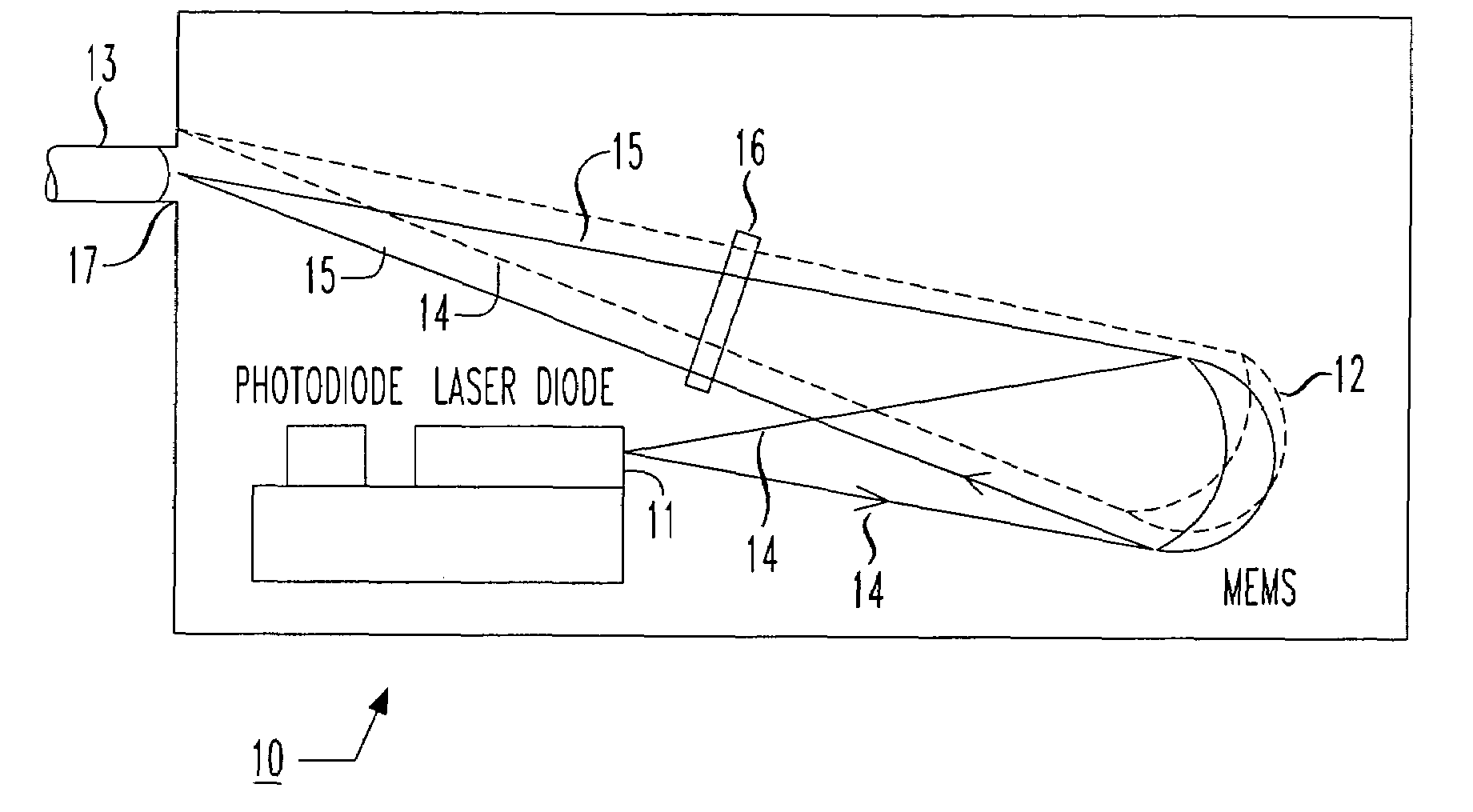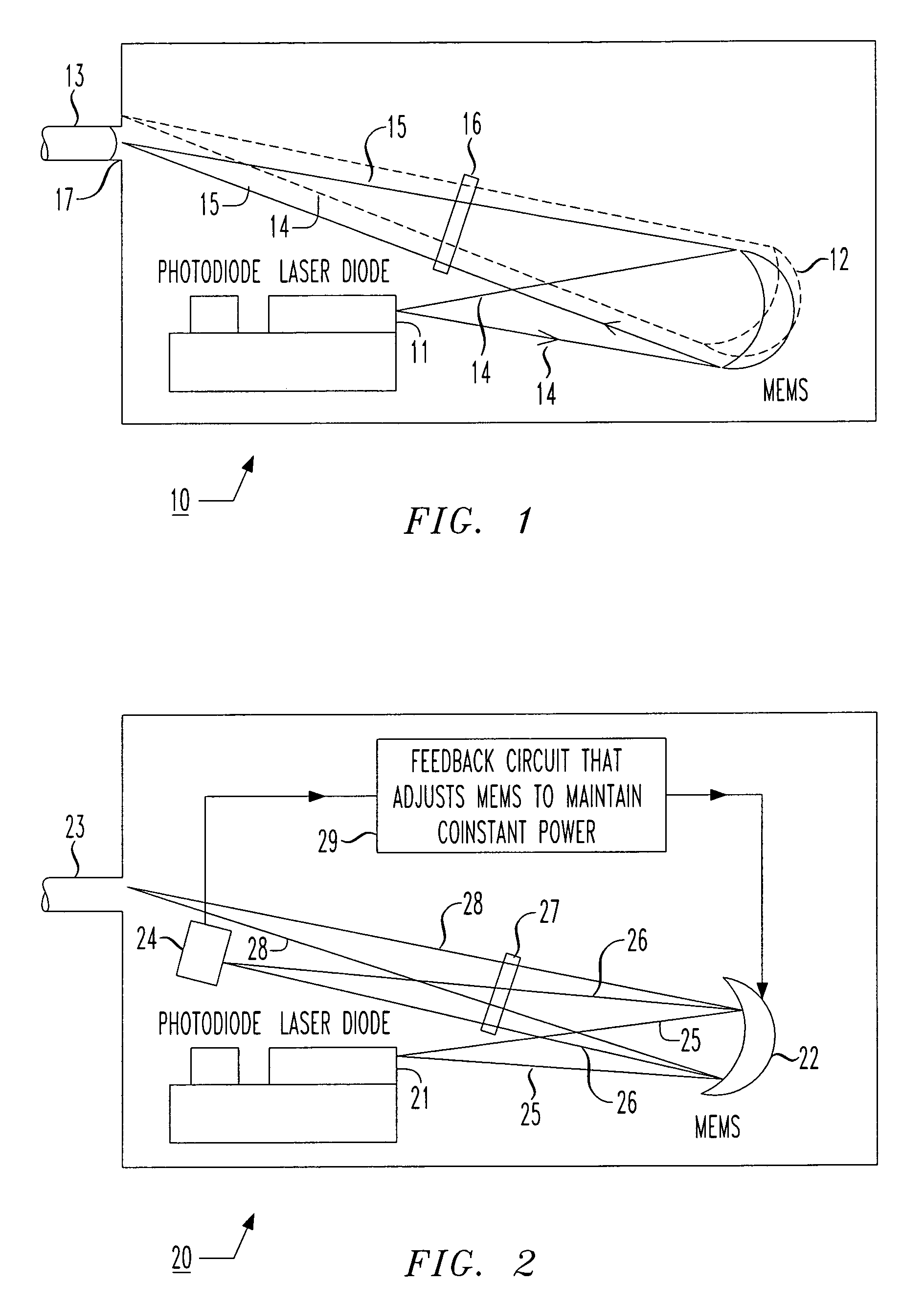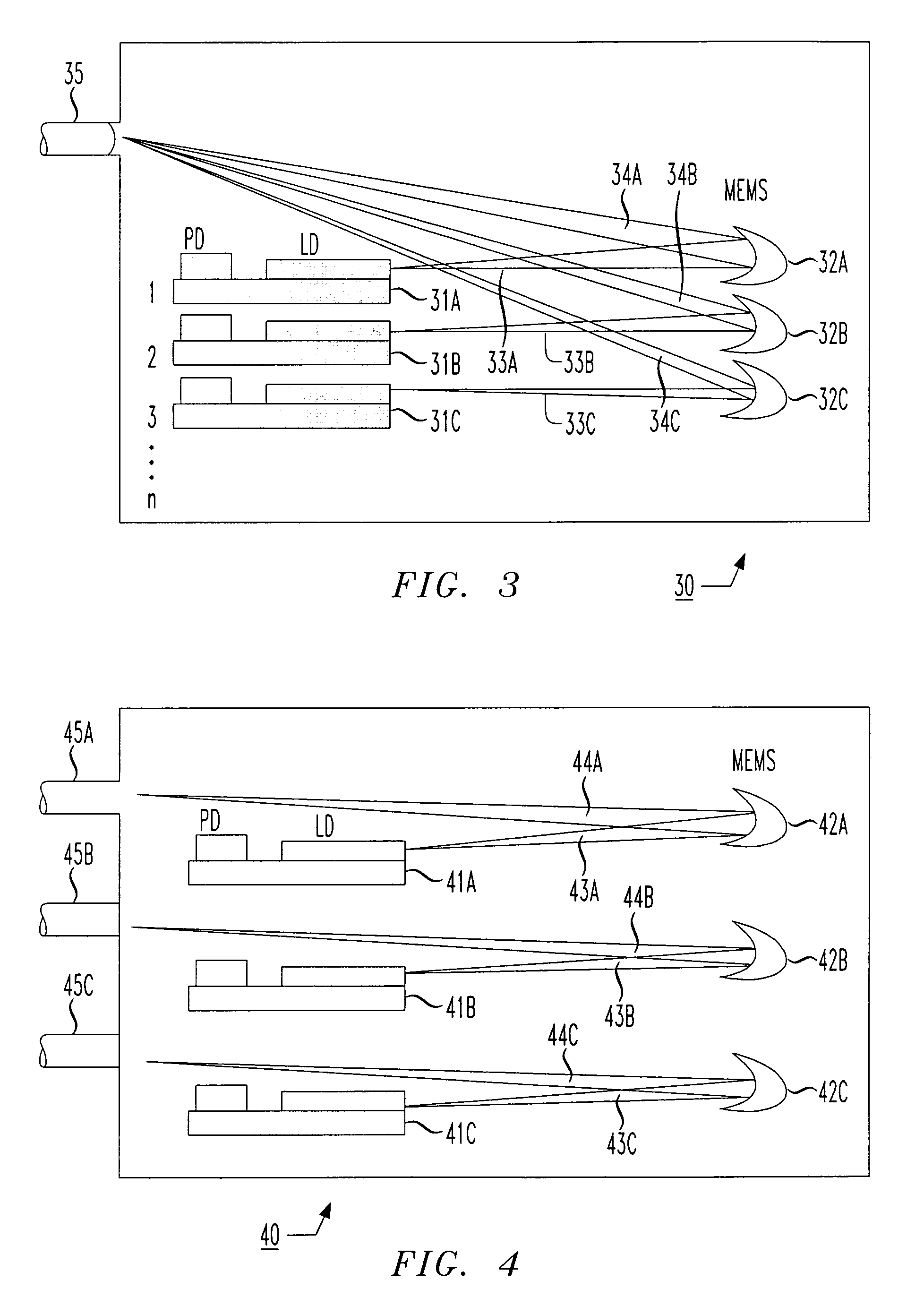Active optical alignment using MEMS mirrors
- Summary
- Abstract
- Description
- Claims
- Application Information
AI Technical Summary
Benefits of technology
Problems solved by technology
Method used
Image
Examples
Embodiment Construction
[0015]The present invention will best be understood from the detailed description given below, as well as from the accompanying drawings of the embodiments of the present invention which, however, should not be taken to limit the invention to specific embodiments, but rather are for explanation and understanding only.
[0016]Referring to FIG. 1, there is shown one embodiment of the invention. In particular, FIG. 1 shows a basic package embodiment of the invention that couples light from a light source to an optical fiber output (or another passive output device, such as an optical waveguide) that is attached to an outside wall of the package. As shown, package 10 includes a laser diode light source 11, a MEMS mirror 12 and a fiber 13. Laser diode 11 generates a conical-shaped beam of light 14 which propagates toward MEMS mirror 12. As mentioned above and will be discussed in detail below, the deflection profile of MEMS mirror 12 is electrically adjusted (through a well-known process) ...
PUM
 Login to View More
Login to View More Abstract
Description
Claims
Application Information
 Login to View More
Login to View More - R&D
- Intellectual Property
- Life Sciences
- Materials
- Tech Scout
- Unparalleled Data Quality
- Higher Quality Content
- 60% Fewer Hallucinations
Browse by: Latest US Patents, China's latest patents, Technical Efficacy Thesaurus, Application Domain, Technology Topic, Popular Technical Reports.
© 2025 PatSnap. All rights reserved.Legal|Privacy policy|Modern Slavery Act Transparency Statement|Sitemap|About US| Contact US: help@patsnap.com



